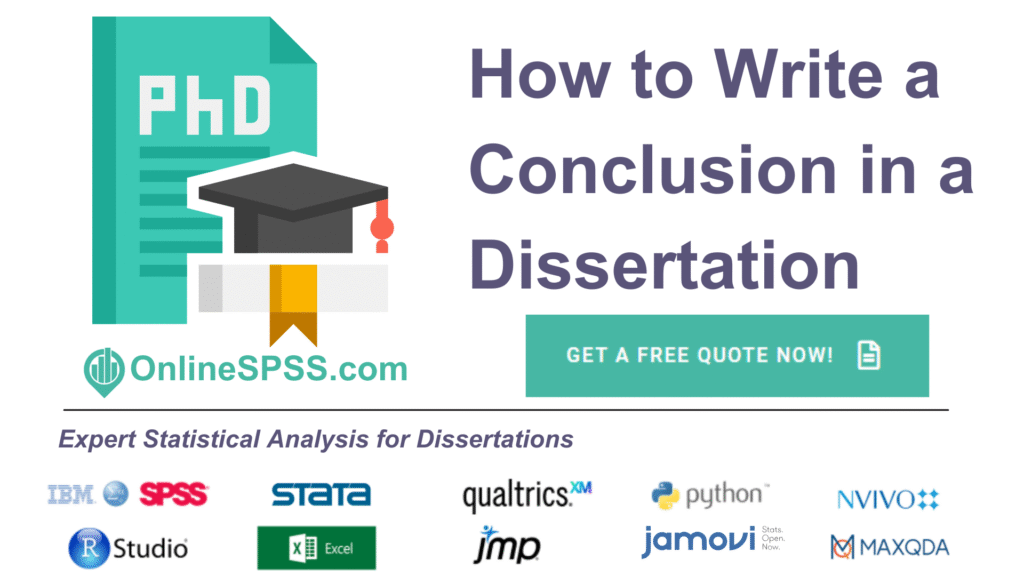How to Write a Conclusion in a Dissertation: A Complete Guide for Students
The conclusion is often the final chapter in a dissertation, yet it is the one that leaves the strongest impression on examiners. While the introduction sets up the research and the methodology explains how it was carried out, the conclusion is where you bring everything together into a coherent whole. It is not just a summary of what has been written but a demonstration of why your research matters and what it contributes to your academic field.
Many students underestimate the conclusion, treating it as a brief recap or even an afterthought. However, this chapter plays a decisive role in shaping the perception of your dissertation. It is the section that examiners often read last before making an overall judgement, and a strong conclusion can elevate the quality of the entire work. Writing it well requires skill: you need to condense thousands of words of research into a succinct, reflective, and academically rigorous closing argument.
Discover our complete dissertation guide series: [Abstract], [Introduction], [Literature Review], [Methodology], [Results], [Conclusion], [Discussion], [References], and [Appendix].
Purpose of the Dissertation Conclusion
The conclusion chapter has several important functions:
- Summarising the research: It provides a clear, concise overview of what was studied, why it was studied, and what was discovered.
- Highlighting contributions: It explains how the dissertation adds to existing knowledge, whether by filling a gap, offering new perspectives, or applying established theories in innovative ways.
- Reflecting on significance: It demonstrates why the findings are relevant, both academically and practically.
- Providing recommendations: It suggests how future research could build on your work and how practitioners might apply your findings.
- Leaving a final impression: It closes the dissertation on a strong note, showing maturity, critical awareness, and academic confidence.
In short, the conclusion should not simply repeat earlier chapters but should synthesise them into a meaningful and impactful final statement.

Difference Between Discussion and Conclusion
Students often confuse the discussion and conclusion chapters because both involve reflection and interpretation. However, they serve different purposes.
- The discussion chapter is analytical and detailed. It interprets the results, explains their meaning, compares them with previous studies, and acknowledges limitations. It is where you explore the why behind your findings.
- The conclusion chapter is concise and summative. It distills the essence of the entire dissertation, highlights contributions, and provides closure. It is less about analysis and more about synthesis.
A useful way to distinguish them is this: if the discussion is about thinking through the details, the conclusion is about showing the bigger picture.
Structuring the Conclusion in a Dissertation
A strong conclusion typically follows a clear structure. Although exact formats vary across universities and disciplines, a well-balanced conclusion often contains the following components:
- Restating the research problem and aims: Remind the reader what you set out to do.
- Summarising the main findings: Present the key results without excessive detail.
- Reflecting on significance: Explain the importance of your findings in relation to theory and practice.
- Highlighting contributions: Show how your dissertation adds to knowledge.
- Discussing limitations briefly: Mention only if necessary, keeping details in the discussion chapter.
- Making recommendations: Suggest implications for future research or practice.
- Final reflective statement: End with a powerful closing that encapsulates your dissertation’s contribution.
This funnel-shaped structure moves from a broad summary to specific contributions and then outward again to future directions, giving the reader a sense of closure.
Restating Research Aims and Questions
The first task of the conclusion is to remind readers of the research problem and aims. This should not be a word-for-word repetition of the introduction but rather a reflective summary framed in light of your findings.
For example:
“This study set out to examine the impact of peer mentoring on first-year university students’ academic adjustment. By analysing survey data and interview responses, the dissertation explored whether structured mentoring programmes improve confidence, engagement, and retention rates.”
This approach reminds the examiner what your dissertation was about and sets the stage for summarising the findings.
Summarising Key Findings
The core of the conclusion is a summary of your main findings. The challenge here is to strike a balance: you want to capture the essence of your results without repeating entire sections.
For quantitative studies, this might involve highlighting significant patterns, relationships, or differences that emerged. For qualitative studies, it may involve summarising central themes and what they reveal about participants’ experiences.
Example:
“The findings suggest that students who participated in peer mentoring reported higher academic confidence and stronger social integration than those who did not. However, the effect on overall grades was less pronounced, indicating that mentoring has a stronger influence on adjustment than on academic performance.”
This summary provides a clear picture of the main outcomes without overloading the reader with numbers or transcripts.

Highlighting the Contribution of the Research
Perhaps the most critical function of the conclusion is to demonstrate your dissertation’s contribution. Examiners want to know: What new knowledge does this work bring?
Contributions may be:
- Theoretical: Extending or challenging existing theories.
- Methodological: Using innovative designs, measures, or analytical approaches.
- Practical: Offering insights for practitioners, policymakers, or organisations.
For instance:
“This dissertation contributes to higher education research by providing empirical evidence that peer mentoring enhances student wellbeing. Methodologically, it combines survey and interview data to offer a more holistic understanding of adjustment, while practically, it suggests that universities should integrate structured peer mentoring into orientation programmes.”
By highlighting such contributions, you show that your work has significance beyond the dissertation itself.
Addressing Limitations in the Conclusion
While limitations are usually discussed in detail in the discussion chapter, the conclusion may briefly acknowledge them. The purpose is not to weaken your research but to show balance.
For example:
“Although the findings are significant, the study was conducted within a single institution, which limits generalisability. Future research should explore peer mentoring in different cultural and institutional contexts.”
This demonstrates critical thinking while keeping the focus on your dissertation’s value.
Writing Implications and Recommendations
Strong conclusions go beyond summarising; they look forward. Discussing implications shows how your research matters outside of the dissertation.
- Theoretical implications: Does your study confirm or challenge existing frameworks?
- Practical implications: Can practitioners or policymakers use your findings?
- Future research: What gaps remain that new studies should address?
Example:
“The results imply that student support services should prioritise structured mentoring programmes. Future research should examine how mentoring impacts diverse student groups, including international students, to assess whether benefits are universal.”
This approach positions your dissertation as a stepping stone for further inquiry.
Style and Language of the Conclusion
The writing style of the conclusion should be confident, clear, and concise. Use declarative sentences that convey certainty in your findings, but also adopt cautious academic language where necessary. Phrases like “The study demonstrates” or “The findings suggest” are stronger than vague statements like “It seems” or “It might be.”
Key guidelines:
- Avoid introducing new data or arguments.
- Keep sentences concise and impactful.
- Maintain an academic but reflective tone.
- Ensure the conclusion reads as a standalone summary of the dissertation.
Length of the Conclusion
The length of the conclusion depends on the overall word count of the dissertation:
- Master’s dissertation: usually 1,000–1,500 words.
- PhD dissertation: often 2,000–3,000 words, depending on the complexity of findings.
A good rule of thumb is that the conclusion should account for about 5–7% of the total word count.
Common Mistakes to Avoid
Students often weaken their conclusions by:
- Repetition: Copying sections from the discussion or results instead of synthesising.
- Introducing new material: Including fresh data or arguments not mentioned earlier.
- Being too vague: Using generic phrases like “In conclusion, this was an interesting study.”
- Ending abruptly: Failing to provide a reflective final statement.
Avoiding these pitfalls ensures that your conclusion is sharp and effective.

Checklist for Writing a Strong Conclusion
Before submitting, ensure your conclusion:
- Restates the research problem and aims.
- Summarises the main findings concisely.
- Highlights theoretical, methodological, and practical contributions.
- Briefly acknowledges limitations where relevant.
- Provides implications and recommendations.
- Ends with a confident final reflection.
If all of these are present, your conclusion will leave examiners with a strong, lasting impression.








